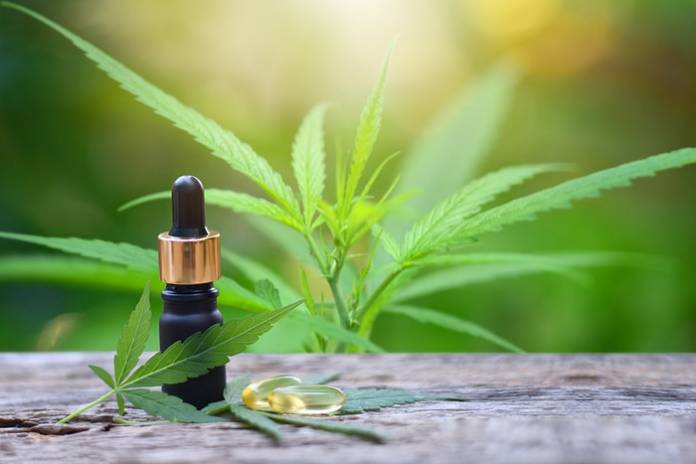
The CBD market continues to grow, and everywhere you turn, you’re likely to find a product that contains CBD. Over the last few years, the popularity of CBD has skyrocketed. As more consumers learn about the health and therapeutic benefits of CBD, a growing number of them are adding CBD products into their daily routine.
However, despite all of the scientific evidence that has been uncovered, there are still a lot of misconceptions and misunderstandings about CBD. It’s likely that a lot of this misinformation has kept people from trying CBD.
So, we’re here to unleash the truth and to clear up any confusion about CBD and its benefits.
Myth #1: CBD is Illegal
As stated above, THC and CBD aren’t the same. While THC has been legalized in several states in the U.S., the substance is still illegal on a federal basis. The 2018 Farm Bill federally legalized CBD products that are derived from hemp. All legal CBD products must contain less than 0.3% THC, which is a trace amount that won’t cause any psychoactive effects.
While CBD has been legalized at the federal level, there are state and local laws that must be taken into effect. CBD is legal in some states, while the product is outright banned in others.
With this said, CBD isn’t illegal, but CBD products may not be allowed in certain states. Check your local laws to ensure that there are no legal issues with using or obtaining CBD in your state.
Myth #2: CBD Gets You High
One of the biggest misconceptions about CBD is that it gets you high. This myth likely stems from the idea that people think that CBD and THC are the same. Others may assume that CBD gets you high because it can be extracted from both the hemp and cannabis plants.
But, the fact is that CBD and THC are two very different cannabinoids. THC is found in high quantities in the cannabis plant and is the cannabinoid that will cause you to get high and feel euphoric. While CBD does interact with the brain, it doesn’t cause any psychoactive effects. This means that you won’t feel any mind-altering effects after taking CBD.
Instead, CBD is known for a wide range of benefits, including:
- Reduced stress and anxiety
- Improved sleep
- Better heart and brain health
- Natural pain relief and pain management
So if you’re looking to get high, CBD products won’t offer the side effect that you seek. But, if you’re looking to feel less stressed and to experience less pain, CBD can definitely help.
Myth #3: All CBD is the Same
This myth is entirely false, no matter how you look at it. The fact is that not all CBD is created equal. CBD can be extracted from many sources, though only hemp-derived CBD is legal in most parts of the world. CBD can also be extracted using various processes, and the end product can differ greatly.
In fact, there are three different kinds of CBD, including CBD isolate, broad-spectrum CBD, and full-spectrum CBD.
CBD isolate is the purest form of CBD. Products that contain CBD isolate contain no THC or any other compounds that naturally occur in the hemp plant. Brands such as Infinite CBD offer CBD isolate products.
Broad-spectrum CBD contains all of the terpenes and flavonoids that are extracted along with CBD. However, all traces of THC are removed. This allows users to reap the benefits of terpenes and flavonoids without the worry of THC consumption.
The third type of CBD is full-spectrum CBD. As the name implies, this type of CBD contains all of the naturally occurring compounds found in the hemp plant, including other cannabinoids, terpenes, flavonoids, and of course, THC. However, it’s worth noting that legal products that contain full-spectrum CBD still contain less than 0.3% THC.
Myth #4: CBD Only Works in High Dosages
There’s no one-size-fits-all CBD dosage. And taking higher doses of CBD doesn’t guarantee results. In order to figure out the dosage that works best for you, you’ll need to be patient and willing to try some trial and error.
The ideal way to introduce CBD into your body is to dose low and slow. Taking too high of a CBD dosage at once may increase the risk of negative side effects, such as nausea and drowsiness.
This means you’ll want to start with a low dose CBD product, such as 5mg or 10mg, and then slowly up the dosage over the course of a few weeks. Make note of how you feel at each dosage, and once you reach your sweet spot, you’ll know.
Another important piece in getting the best results when taking CBD is to ensure that you’re only using high-quality CBD. Products that contain low amounts of CBD or low-quality CBD aren’t going to give you the results you want.
To ensure you’re using a worthwhile product, check CBDGrade before making a purchase. The site offers in-depth information and reviews for all of the well-known CBD brands. With this information, you can make a more informed decision whether you’re buying CBD isolate gummies of full-spectrum CBD oil.
Myth #5: There’s No Scientific Evidence That CBD Works
Many say that there is no concrete evidence that CBD is able to treat certain health conditions. Others claim that CBD is just another snake oil product that’s out to get people’s money.
While it’s true that there is a need for many more clinical trials to completely understand how CBD may benefit humans, it’s untrue to say that there is no scientific evidence.
To start, a few years ago, the FDA approved the drug Epidiolex to treat rare seizure disorders. The drug’s main active ingredient is CBD, which is truly monumental. This decision is proof that CBD does offer tried and true health benefits.
Conclusion
While it can be hard to know what CBD information is true and reliable, the best thing you can do is to be diligent and to only gather information from trusted sources. CBD may seem too good to be true, but studies show just how beneficial the cannabinoid really is for treating all sorts of health conditions.











